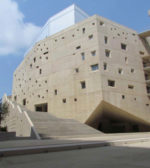College & University
Durant Hall, University of California, Berkeley
Mark Cavagnero refreshes and subtly reorganizes a century-old building in the historic core of a storied campus.
Read More
Gilman Hall, Johns Hopkins University
Kliment Halsband replaces the void at the core of a stately building with a lively space for study and socializing.
Read More
Perry and Marty Granoff Center for the Creative Arts by Diller Scofidio + Renfro
Providence, Rhode Island
November 15, 2011
Morse and Ezra Stiles Colleges
KieranTimberlake’s renovation and expansion retains the medieval-modern spirit of the Eero Saarinen–designed complex at Yale.
Read More
Copyright ©2024. All Rights Reserved BNP Media.
Design, CMS, Hosting & Web Development :: ePublishing


